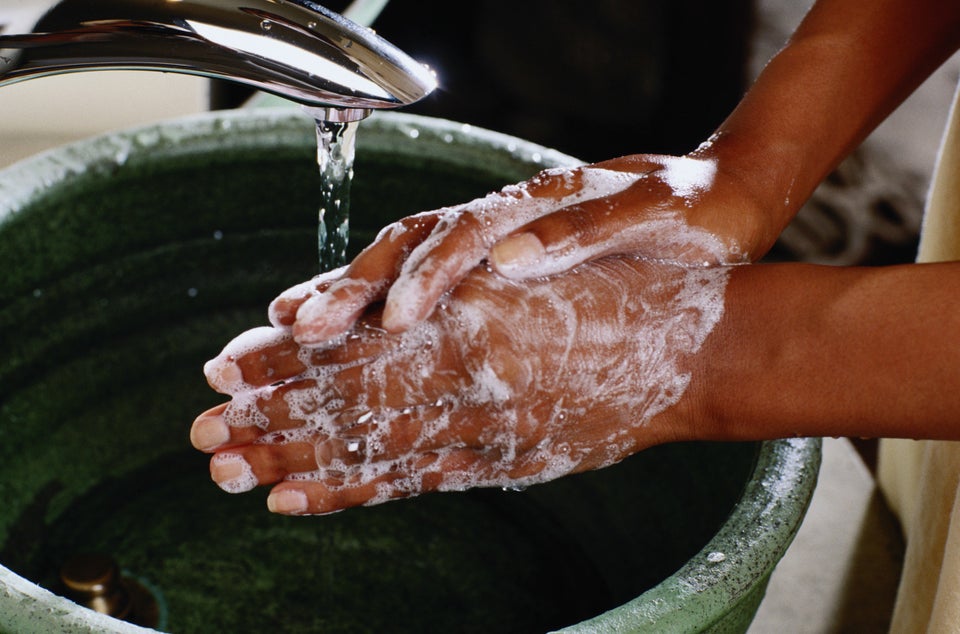Is Raw Beef Safe to Touch
As a health-conscious person, I'm often asked whether or not I eat meat. My answer? Yes, and I love it. It's delicious and gives me tons of energy, but I almost never cook it at home.
Don't get me wrong, I love the idea of cooking meat at home. I could opt for the highest-quality free-range chicken and grass-fed beef while still saving money, which would be a huge bonus. Unfortunately, raw meat terrifies me. Between tales of contamination and the many articles I've read about salmonella and listeria outbreaks, handling a raw steak practically feels like a death wish.
Deep down, I know I'm being irrational — especially because the meat I order at restaurants started out just as raw as the meat I find at the grocery store. In an effort to get over this little phobia of mine, I decided to reach out to food safety experts to find out exactly how to safely handle raw meat, from taking it out of its packaging to cleanup. If you share a similar fear, here's everything you need to know.
Does low-quality meat put you at greater risk of contamination than high-quality meat?
According to Archie Magoulas, a food safety expert for the USDA, you're just as likely to get sick from low-quality meat as you are high-quality meat if you don't take proper safety precautions. "Whether it's a premium cut or a choice cut of meat, safe handling and preparation are very important," he told HuffPost. "Safe steps in food handling, cooking and storage are essential to prevent foodborne illness. You can't see, smell or taste harmful bacteria that may cause illness."
Here's what to do to prevent contamination at home.
That's a scary thought, but if you follow the rules, contamination is pretty unlikely. The first rule to follow? Hand-washing. " Always wash hands with warm water and soap for 20 seconds before and after handling food," Marc Sanchez , an attorney who focuses on food safety, told HuffPost. Once you've done that, just make sure you clear a space where you're only handling meat, and not a bunch of other ingredients or utensils you're using for your meal.
"Bacteria in raw meat and poultry juices can be spread to other foods, utensils, and surfaces. We call this cross-contamination," Magoulas explained. "If you marinate, place meat and poultry in a covered dish in the refrigerator."
Once it's time to cook, temperature is key. So if you don't have a meat thermometer, it might be time to invest in one. "Cook all raw beef, pork, lamb and veal steaks, chops and roasts to a minimum internal temperature of 145 degrees Fahrenheit (62.8 degrees Celsius) as measured with a food thermometer before removing meat from the heat source," Magloulas said. For safety and quality, you should let the meat rest for at least three minutes before you carve or eat it. You can cook your meat to a higher temperature if you'd like (though it will dry out your meat), but lower temperatures will place you in risky territory.
If you're cooking ground meats like beef, pork, lamb or veal, Magoulas suggests going for an internal temperature of 160 F (71.1 C) as measured with a food thermometer, while poultry should be cooked to an internal temperature of 165 F (73.9 C).
Preparation and cooking is a good chunk of the battle, but what about the aftermath? According to Sanchez, proper cleanup is key. He said that while hot, soapy water works well for a basic cleanup, it's important to sanitize, too. "C utting boards, utensils and countertops can be sanitized by using a solution of 1 tablespoon of unscented, liquid chlorine bleach in 1 gallon of water," he said.
Meat isn't the only food you should handle with care.
Meat poses a risk for food safety, but according to Magoulas, there are also risks around most of the foods we eat.
"Raw meat, poultry, seafood and eggs are not sterile. Neither is fresh produce such as lettuce, tomatoes, sprouts and melons," said Magoulas. " Thousands of types of bacteria are naturally present in our environment, and microorganisms that cause disease are called pathogens. When certain pathogens enter the food supply, they can cause foodborne illness. But it's important to remember that not all bacteria cause disease in humans. For example, some bacteria are used beneficially in making cheese and yogurt."
Watch out for these types of meat, which aren't inspected as closely.
According to Sanchez, there are certain meats that may be more likely to get you sick.
"The USDA FSIS [Food Safety and Inspection Service] only inspects beef, pork, chicken, turkey and catfish," he said. "Other meats, like wild game, other fowl, all seafood (except catfish) and some meat products are just under FDA jurisdiction. USDA FSIS operates on-site, continuously, and stamps all products with the marks of inspection."
Still, he adds, freshness is key, and these regulations shouldn't deter you from eating these meats entirely. Just make sure to look, touch and smell before buying or preparing — following your intuition is always a good idea, especially when it comes to food safety.

10 Facts On Food Safety
Source: https://www.huffpost.com/entry/raw-meat-safety_l_5d07b0cee4b03eb73ef81a25
0 Response to "Is Raw Beef Safe to Touch"
Post a Comment